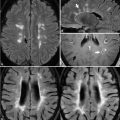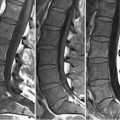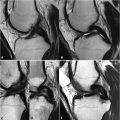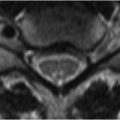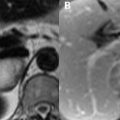66 Malignant Hepatic Masses The most common primary hepatic malignancy presenting with arterial phase enhancement (30 seconds postinjection) is hepatocellular carcinoma (HCC), which occurs in a solitary, multifocal, and less-common diffuse pattern. HCC typically appears hypo- and hyperintense to cirrhotic parenchyma on T1WI and T2WI, respectively. Characteristically avid arterial-phase enhancement fades by the interstitial phase (5 to 15 minutes postinjection) except in the case of a late-enhancing pseudo-capsule, which is present at least half of the time. In a cirrhotic liver, the major differential for a lesion enhancing in the arterial phase is a regenerative nodule, although these typically remain similar to parenchymal SI on interstitial-phase images, enhance overall more homogeneously, and may demonstrate hemosiderin deposition (low SI on T2WI). Dysplastic nodules, which may be precursors to HCC are larger and may overlap with the latter in appearance. Fibrolamellar carcinoma—a HCC variant found in young patients without cirrhosis—may be confused with focal nodular hyperplasia due to its central scar, which is hyper- and hypointense to hepatic parenchyma on the respective T2 and GRE T1WI of Figs. 66.1A,B. This lesion enhances on (Fig. 66.1C
![]()
Stay updated, free articles. Join our Telegram channel

Full access? Get Clinical Tree


